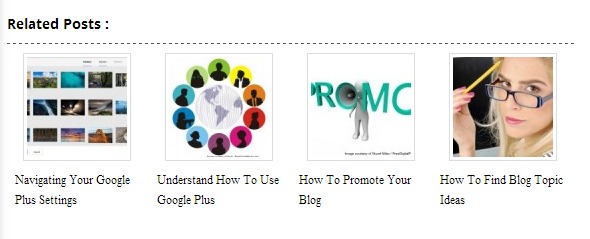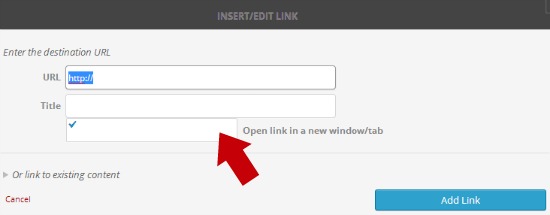Reduce The Bounce Rate On Your Blog
Do you know what the bounce rate is for your blog? Are you aware of how the bounce rate can actually affect your blog’s ratings?
The bounce rate is simply how long a reader remains on your blog. If a reader arrives and then leaves without visiting another page on your site, this will add to a higher bounce rate.
The more clicks you can achieve on your blog, the lower the bounce rate will be. Sounds easy enough doesn’t it! Well it’s not quite as simple as it sounds, but there are certainly blogging tips that can help to reduce the bounce rate.
 If you are noticing that readers are staying on your blog, it usually means that they are either engaging with your post, moving on to read another post or browsing services you have on offer.
If you are noticing that readers are staying on your blog, it usually means that they are either engaging with your post, moving on to read another post or browsing services you have on offer.
It is better to think this than to think they have just gone off to make a cup of coffee!
Anything that causes your readers to ‘click’ something on your blog, is giving them a reason to stay and thus reducing the bounce rate.
What do I mean by clicks? Well, it could be a number of things such as;
- A click on the search box on your site.
- A click to opt-in for your newsletter or RSS feed.
- A click which shares your post on another social media site.
- A click where someone has commented on your post
- Etc Etc…
Every time you receive a ‘click’ on your blog, this is GREAT!
If most of your readers are clicking at least once on your blog, it is demonstrating to the search engines that you have what they want. This can in turn help to bring more traffic to your site. Please therefore feel free to click away on this blog before you leave!!
8 ways to reduce the bounce rate
There are numerous things you can do to reduce the bounce rate on your blog.
1: Provide your readers with direction to other content: Are you actually giving the readers of your blog the opportunity to go elsewhere within your site? Are you linking to other posts on your blog within each and every blog you write?
Linking to other posts is a great way to connect your material together and give the reader an entire experience. Link your posts with an interesting phrase or something that will entice them. You are basically trying to say “hey, I have more for you to read here…go take a look”…but in not so many words!
2: Make sure you are gaining targeted traffic: You need to ensure that the traffic being directed to your blog is the traffic you want to receive. There is such a thing as bad traffic! If you are receiving traffic that has no interest in your blog, what do you think will happen? Yes…they will leave! If traffic is consistently leaving your blog, then it is increasing your bounce rate.
It is therefore important to pay attention to what information you are giving out to your social media networks and paying close attention to your SEO to make sure you are receiving targeted traffic.
3: Include an “about me page”: Some bloggers arn’t overly fussed about this, but a lot of bloggers like to know who they are engaging with. An “about me” page is a description of who you are, and it allows readers to feel a connection with you. If you have an about me page clearly identified, then it will entice readers to click on it…and stop them from leaving your site!
It is always a good idea to include a photo of yourself on your about me page, as this helps the warm fuzzy feelings of that connection. And yes…the photo MUST be of you and not some photo you have stolen off the internet!!
4: Include a sign up box: A sign up box could be a sign up to a newsletter or a free e-book etc etc. Think about what might entice people to sign up and make sure you include this in a prominent position. There is a sign up box on this site….why not give it a try and see what happens….’hint hint’!
5: Add a relevant posts plugin: If you can literally hand material on a plate to your readers, they are more likely to stick around to see what else you have. I love the relevant post widgets as they do all the hard work for you. You will notice that I have the IGIT Related Posts plugin at the end of this post that identifies other posts on the blog that you might be interested in.
If readers click on any of the posts highlighted, the bounce rate will be going down as there is a ‘click’ and readers are staying longer on the blog. The plugin that you use will determine how the related posts are shown, but I personally love the simplistic and clean look.
6: Add a popular posts widget: A popular posts widget is literally advertising to your readers what others are reading. You already know that these posts are popular, so why not showcase it!
Having this widget is basically saying “other’s are finding this material interesting, so have a read yourself”. Sometimes people don’t know what it is they want to read next, and seeing something on your blog, could literally just spark an interest for them.
7: Ensure that external links are opening up in a new tab: If you are interlinking to posts within your own blog, it is quite ok for this to be opened in the same window. It becomes very annoying when readers constantly have numerous tabs open for the same blog.
However, when you are linking to a site that is NOT yours, make sure that you ALWAYS have this open to a new window! It is great for your SEO to link to outside sources, so don’t refrain from doing this, but make sure you are not directing your readers away from your content. An easy way to do this is to click that you want the link to open in a new window, when you initially attach the link.
8: Don’t let your readers become bored! Whilst you may be enjoying the sound of your own typing, remember to break up the dull chunks of text! Include that white space, headings, and pictures to make the post more breathable. Readers are not likely to read the entire post nor move onto any others if you have bored them to tears!
As you become more experienced in your blogging, you will start to understand what works well for your site and what things naturally reduce the bounce rate. In the meantime, these are tips that you can put into action and keep a close eye on your traffic reports to see what differences are occurring.
If you are still struggling to understand the bounce rate and are concerned that your bounce rate is too high, you might like to tap into the learn how to blog program where you can be given the guidance and support to address the issues on your specific site.
Do you pay much attention to the bounce rate on your blog? Do you have any other tips to share that would be beneficial? Please leave your comments below.







It is so easy to continue clicking on your page since you have so much valuable blogging content :).
Do you know of a widget, similar to a popular posts widget that you mention above, that will allow me to pick what 5 or so posts I want to highlight in a sidebar widget rather than what posts are currently “popular.” I have used a popular posts widget in the past but it usually highlights my most recent posts since those are the ones being read right now. I want to highlight some older posts that I thank will have value to newer readers to my site as well.
Thanks for the lovely feedback Dawn
You may like to try something like the flexible post widget http://wordpress.org/plugins/flexible-posts-widget/ You can customise this widget and it sounds like something that may be suitable for you.
Hi Catherine,
Nice share!
Well, I tried to use IGIT Related Posts plugin that you said in this article, but the related post which appears only one post in my blog. Why is that? Can you help me?
Now I disable the plugin to ask you first.
I see on your blog, the plugin works fine. How the settings?
Can you help me so that this plugin can work well on my blog?
Thanks for sharing this helpful one article, Catherine.
Regards,
Nanda
That’s great you are going to give the plugin a try. First download it to your plugin area. Then go back into your dashboard and click on settings. Scroll down your settings until you see the IGIT plugin. Click on the plugin name and then it will open up the settings tab for you. You will then be given the option of how many posts you wish to display and what you would like the display to look like. Hope that helps!
Hi Catherine,
Okay, I see. I have tried this plugin.
Thank you for your answer, Catherine. Very helpful for me
Regards,
Nanda
Your very welcome Nanda. I hope you enjoy using the plugin
Thanks Catherine – this is my Friday afternoon chore – to see how well I conform to your ideas!
Ha ha…good luck with it Peter! I’m sure you will see the benefits in the long run, these tips are well worth implementing
Some very valid points here Catherine. Well worth pursuing.
Thanks Angus, I hope they help you with your blogging